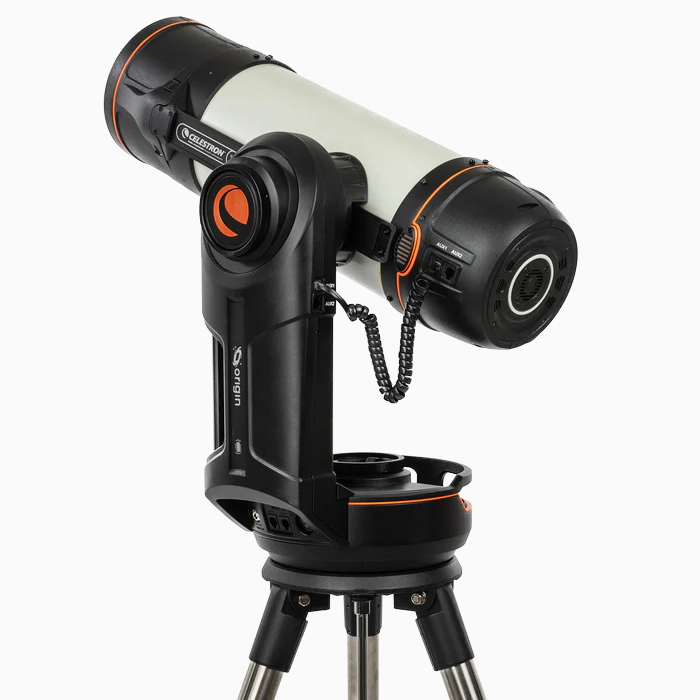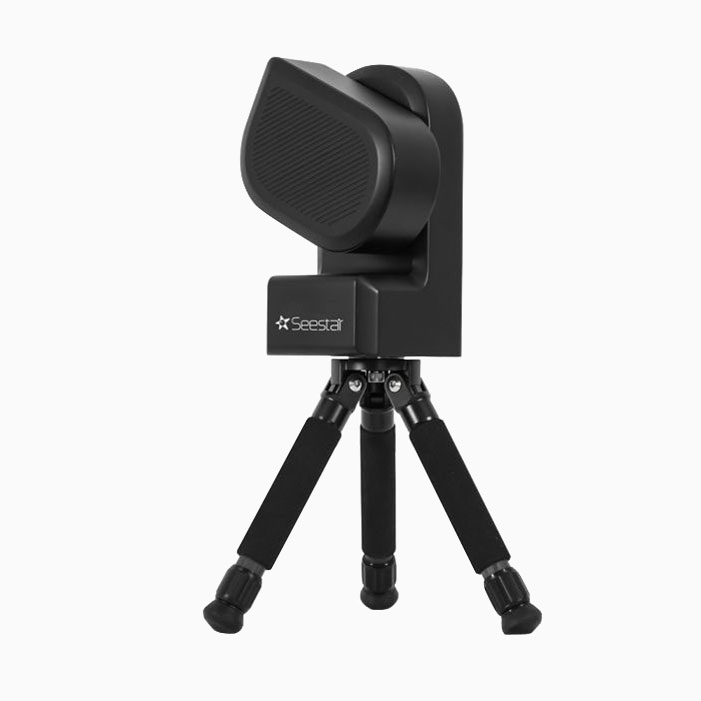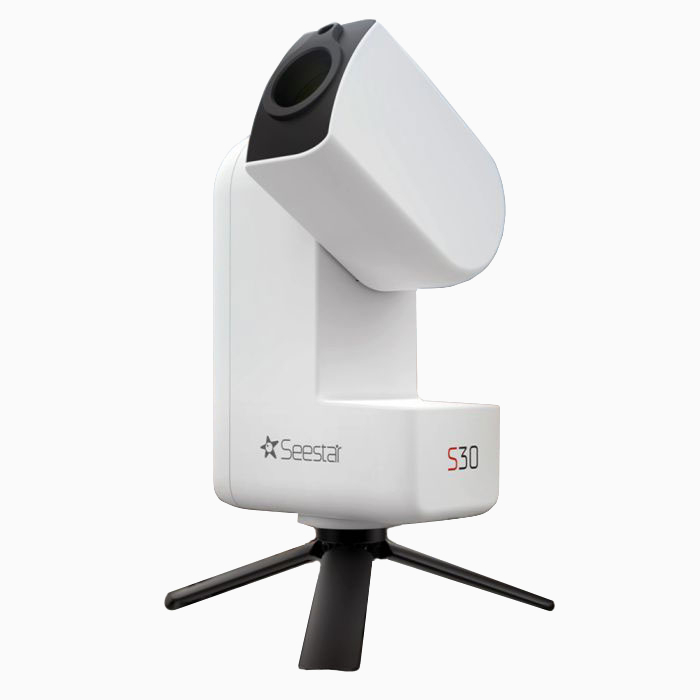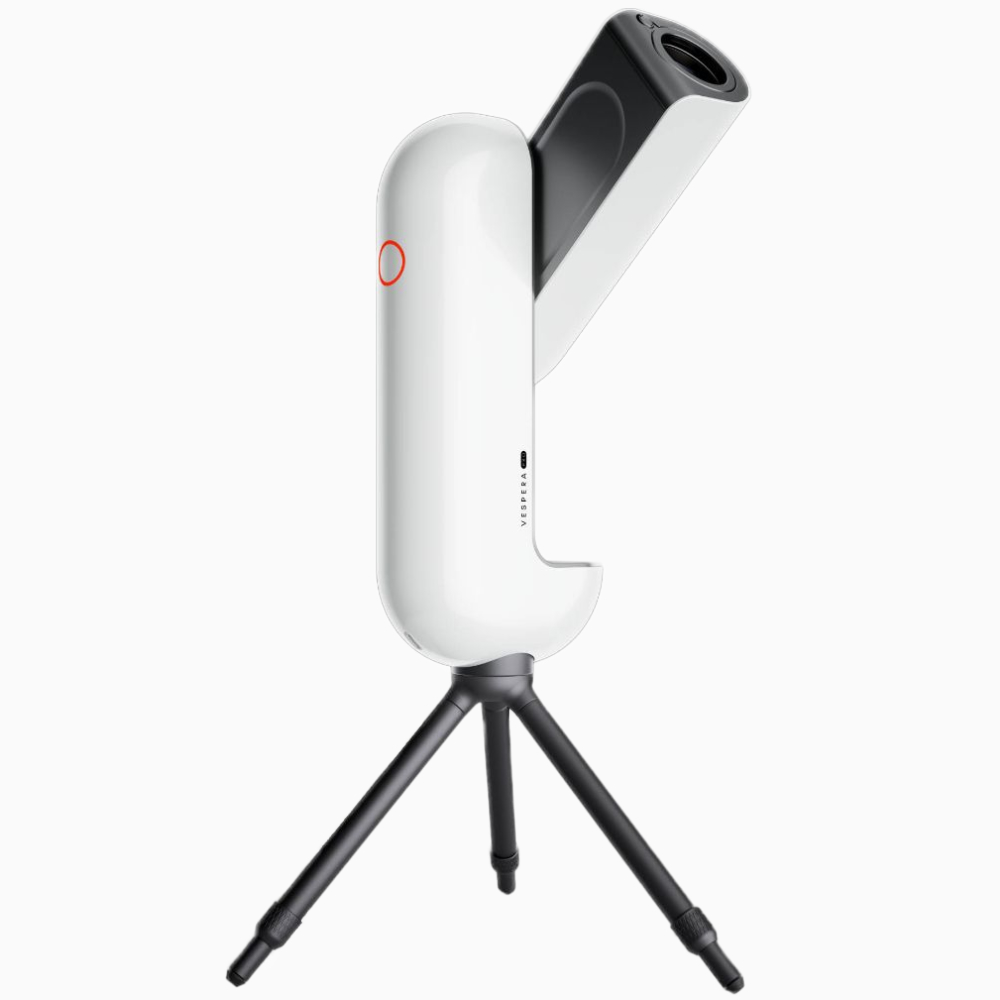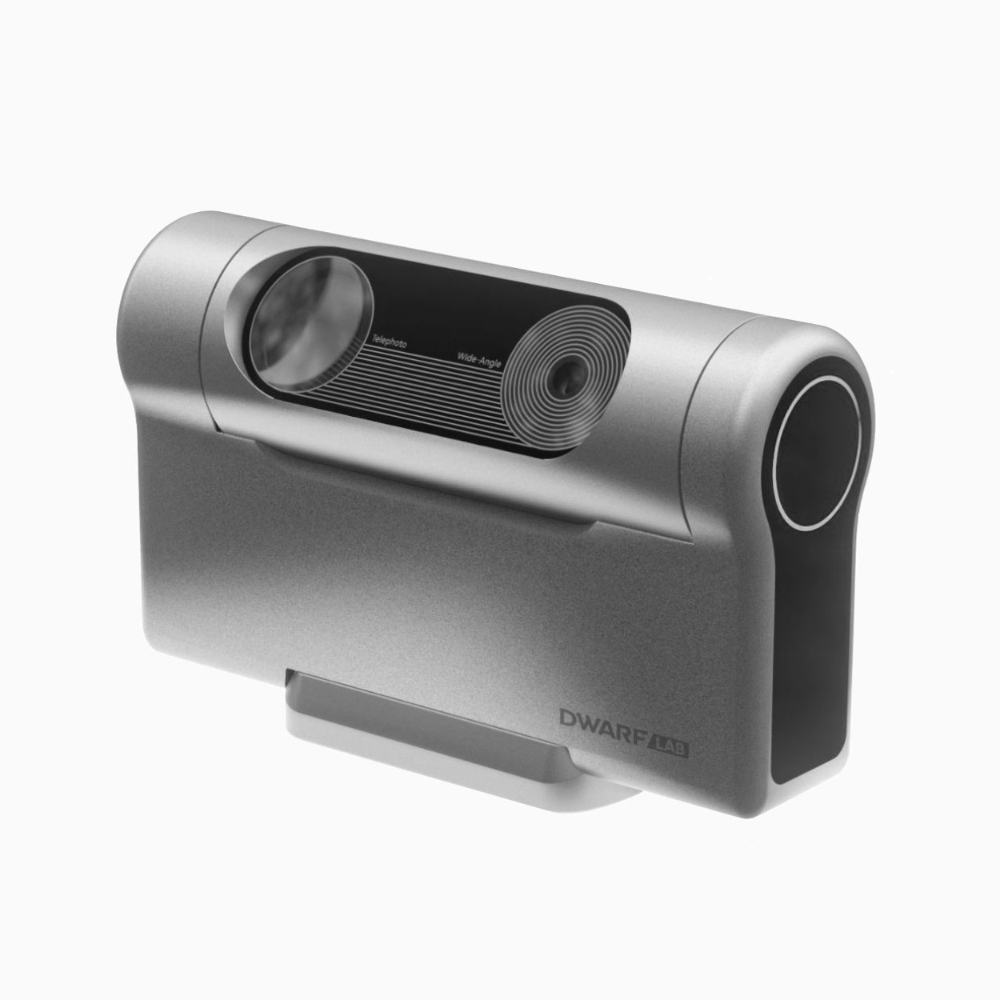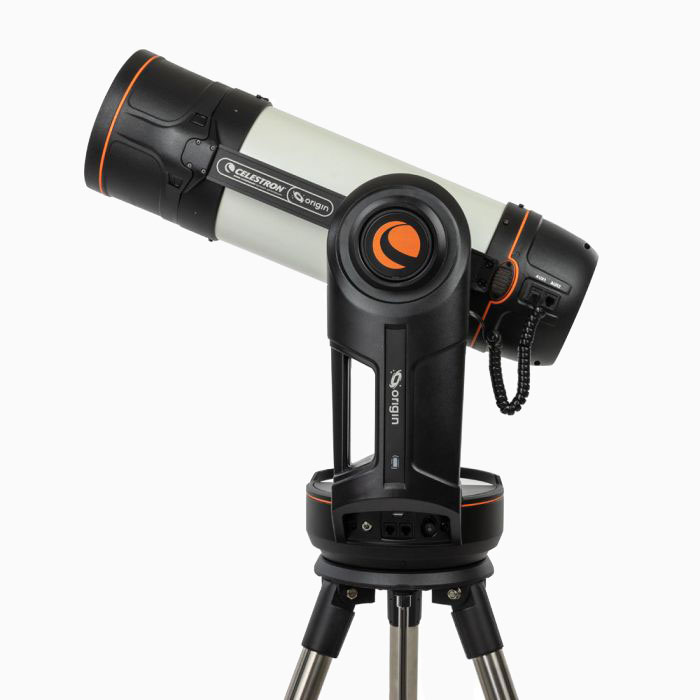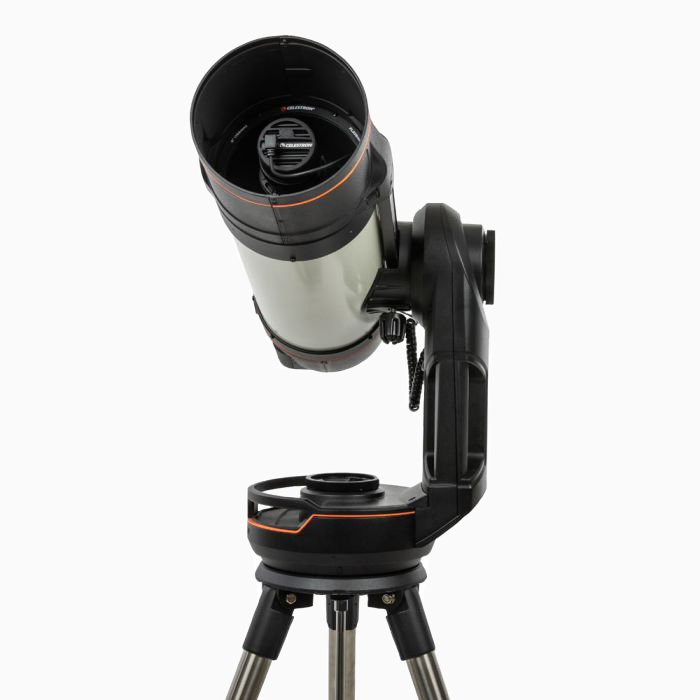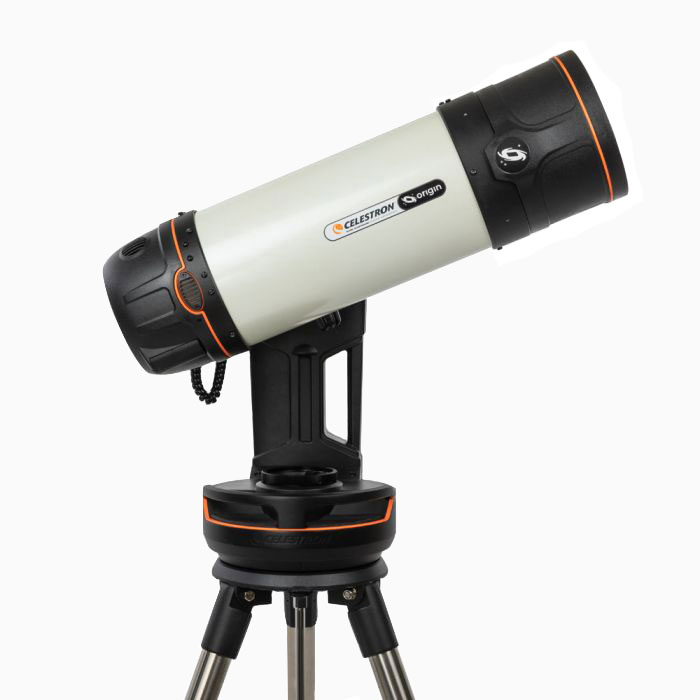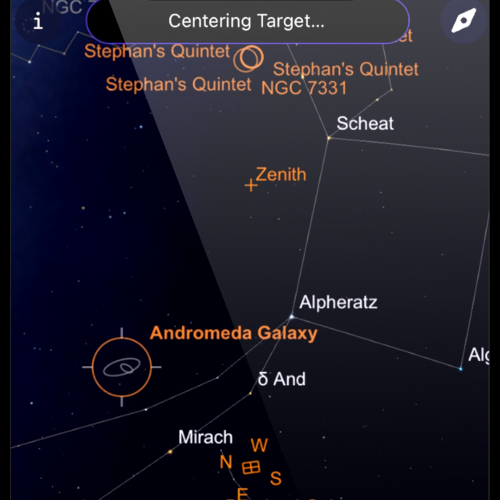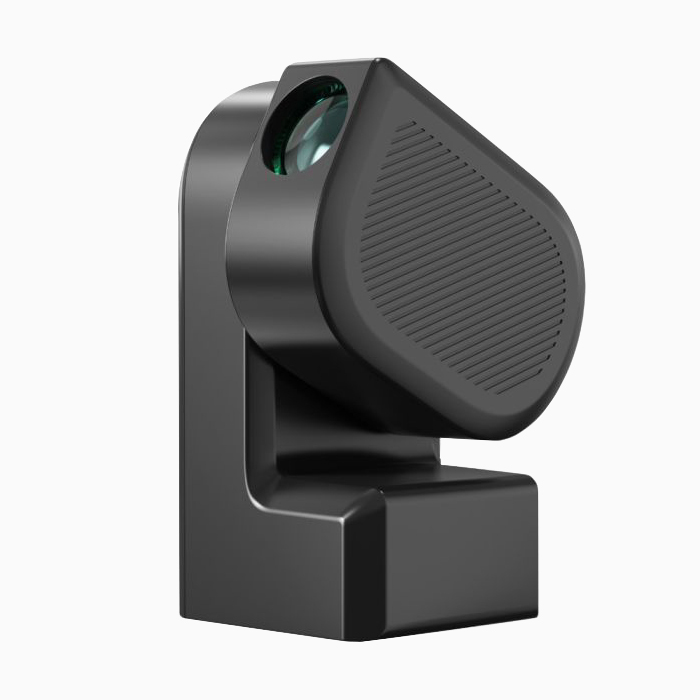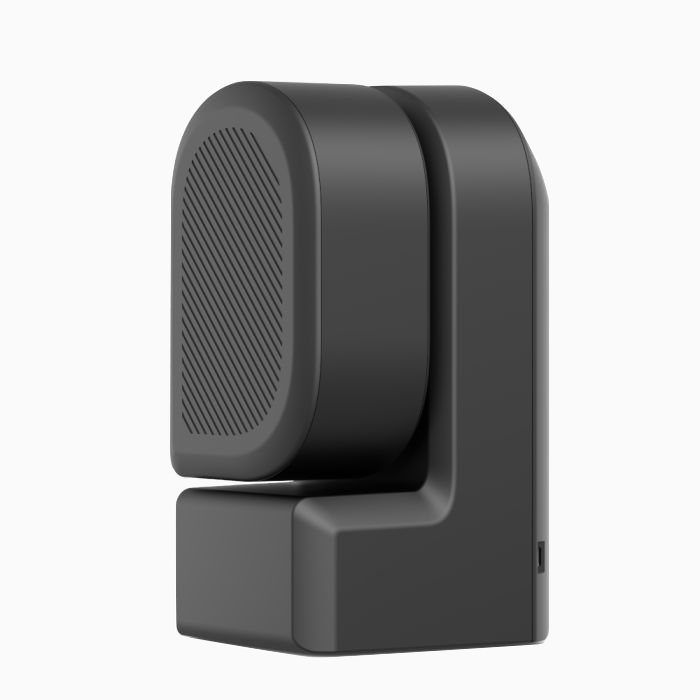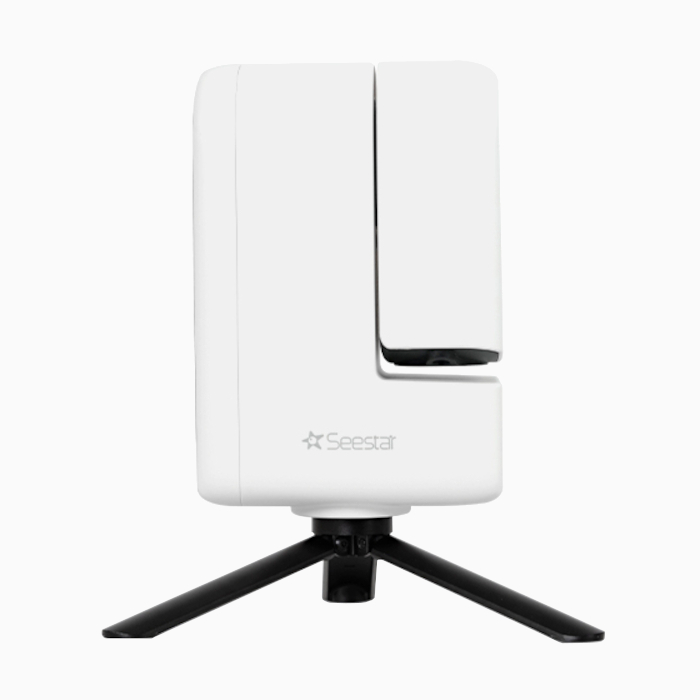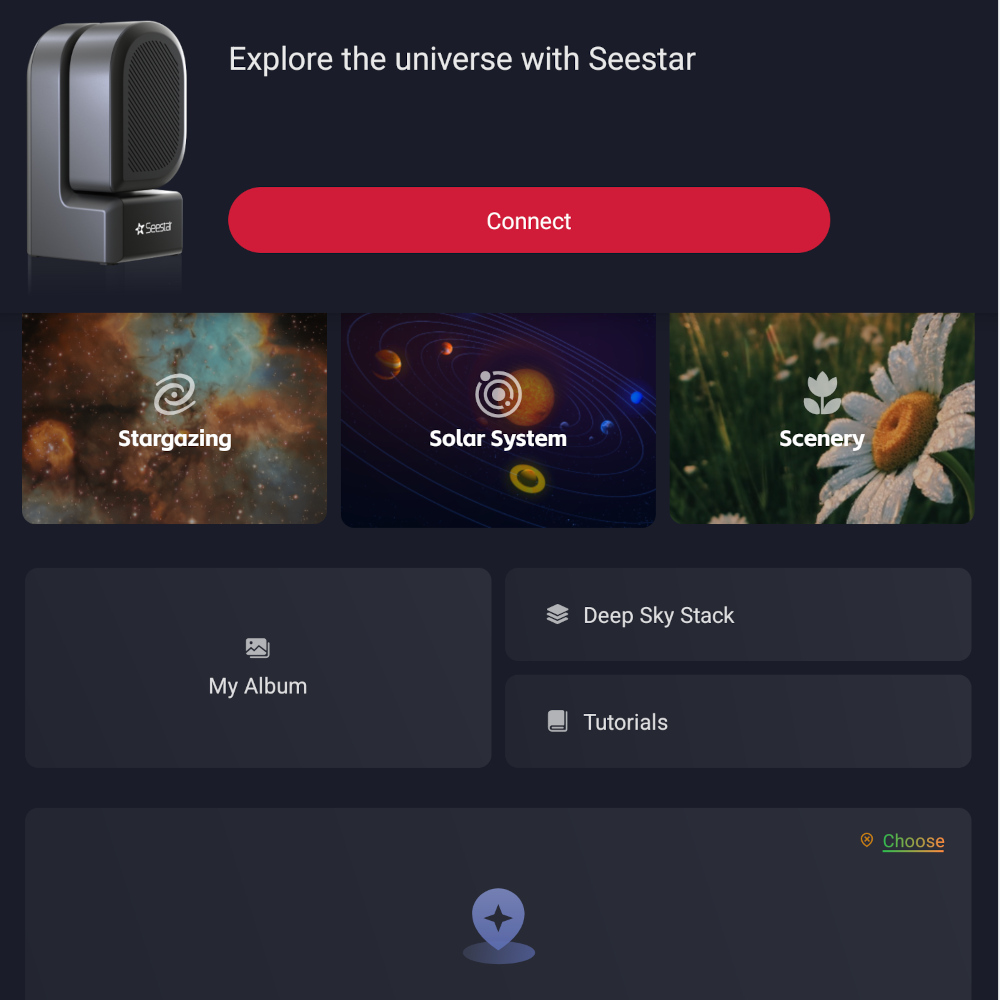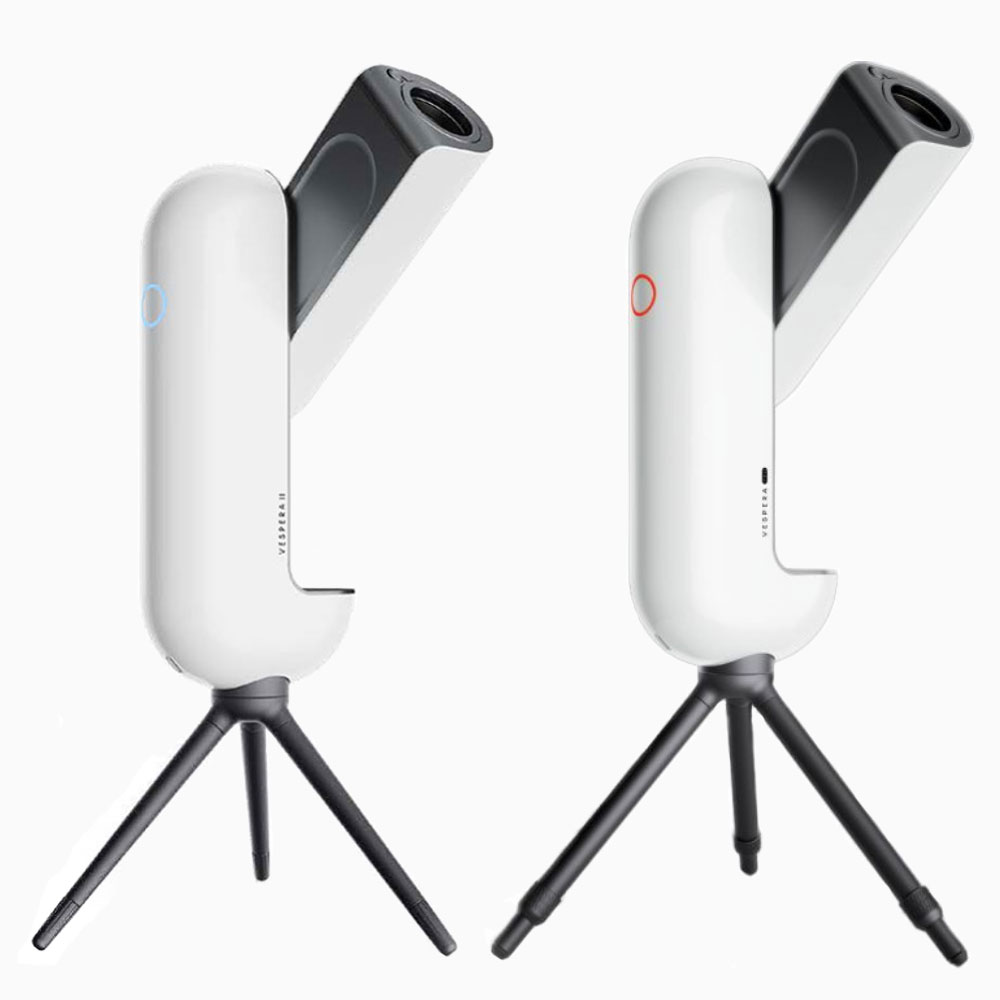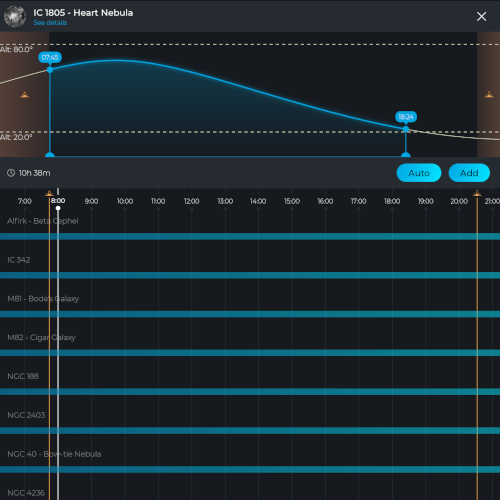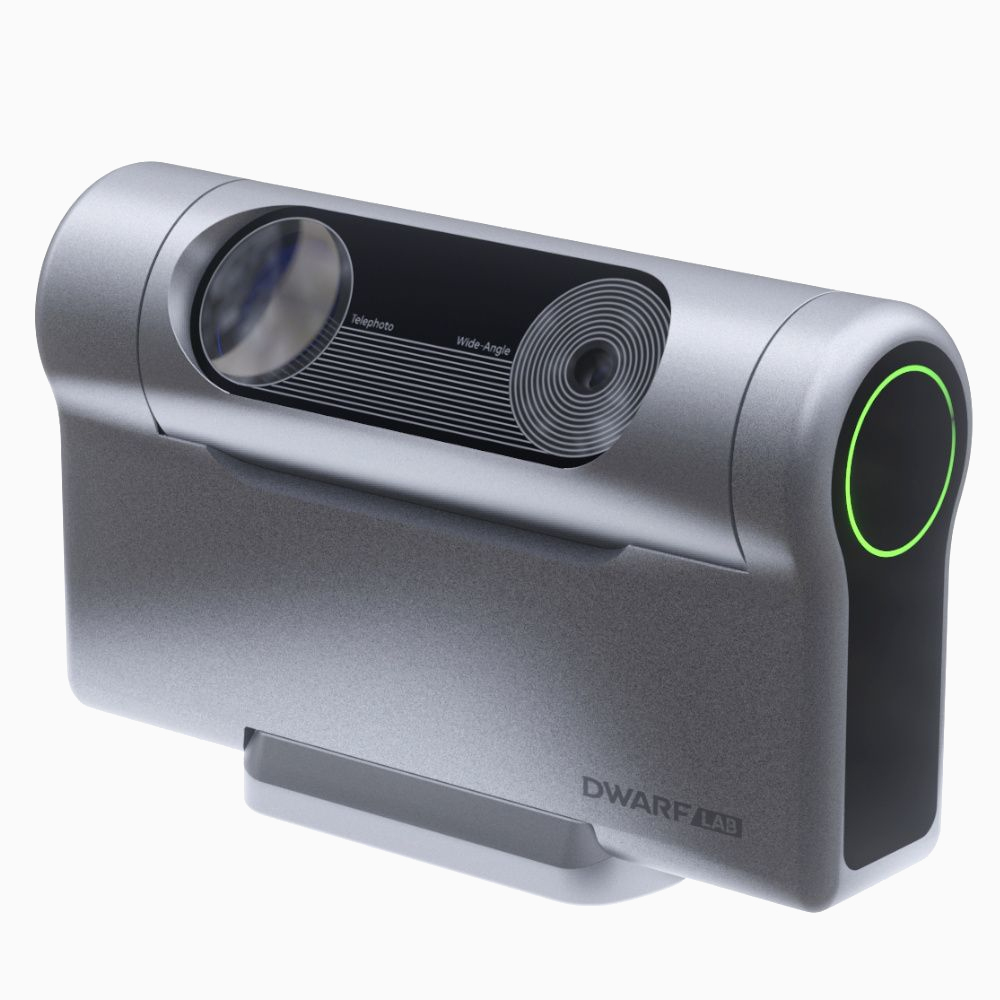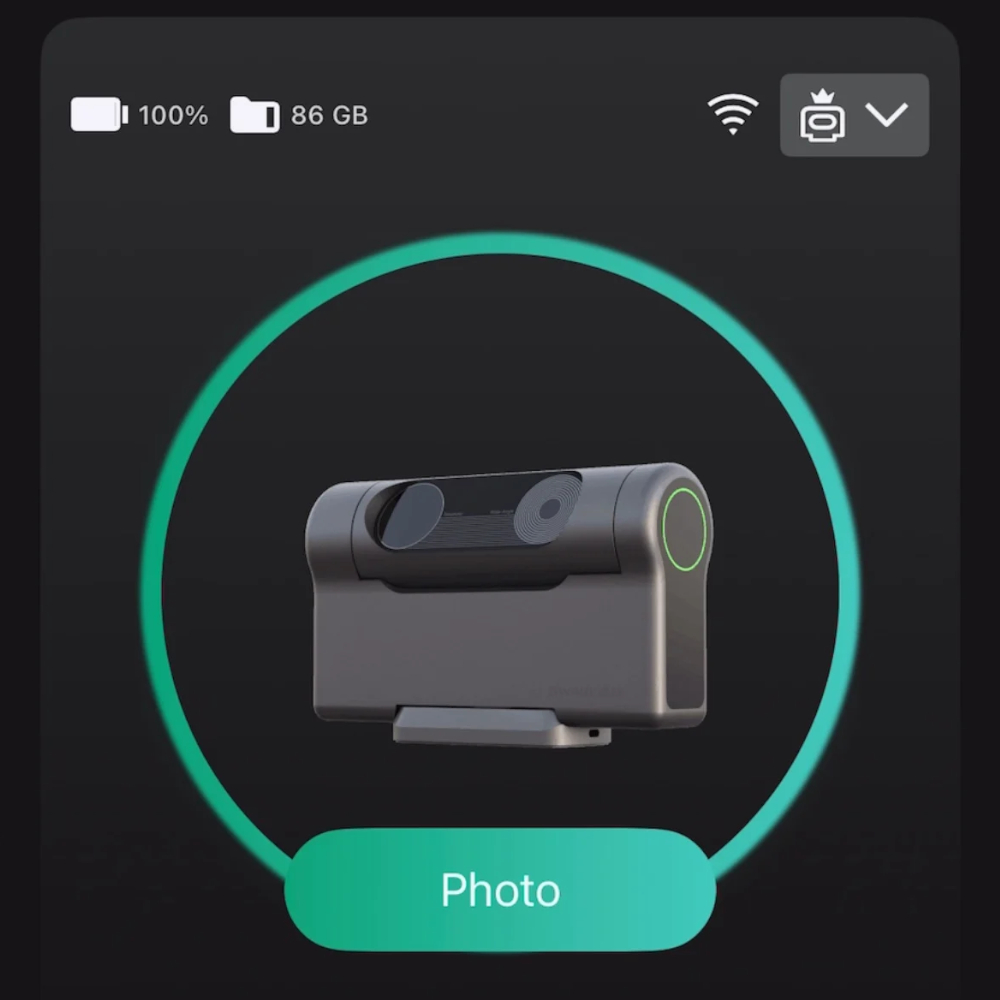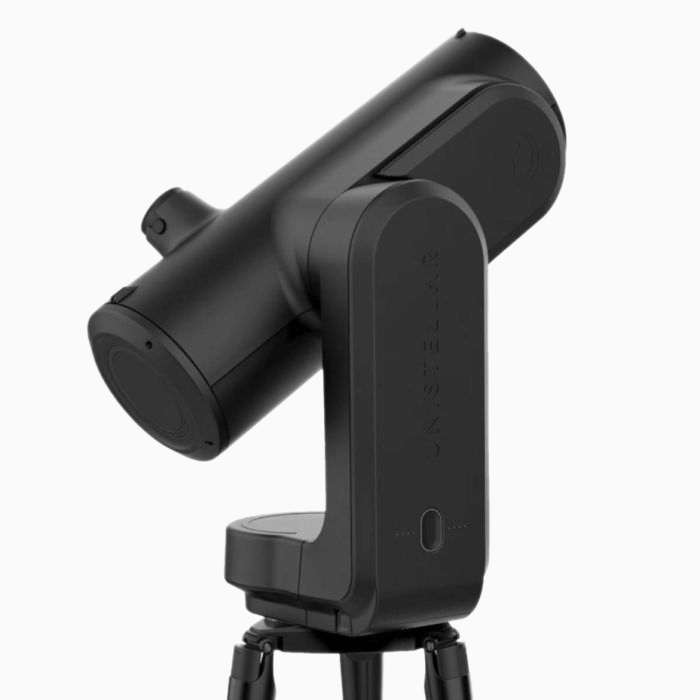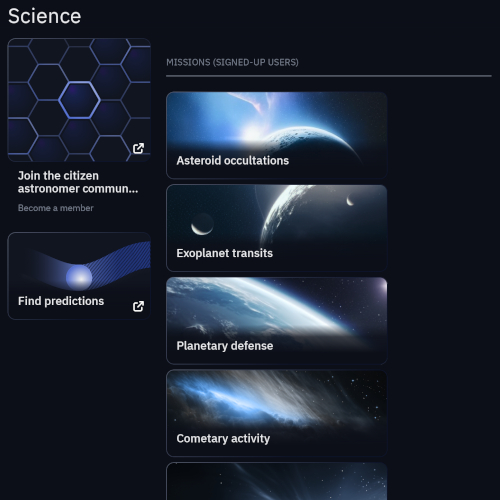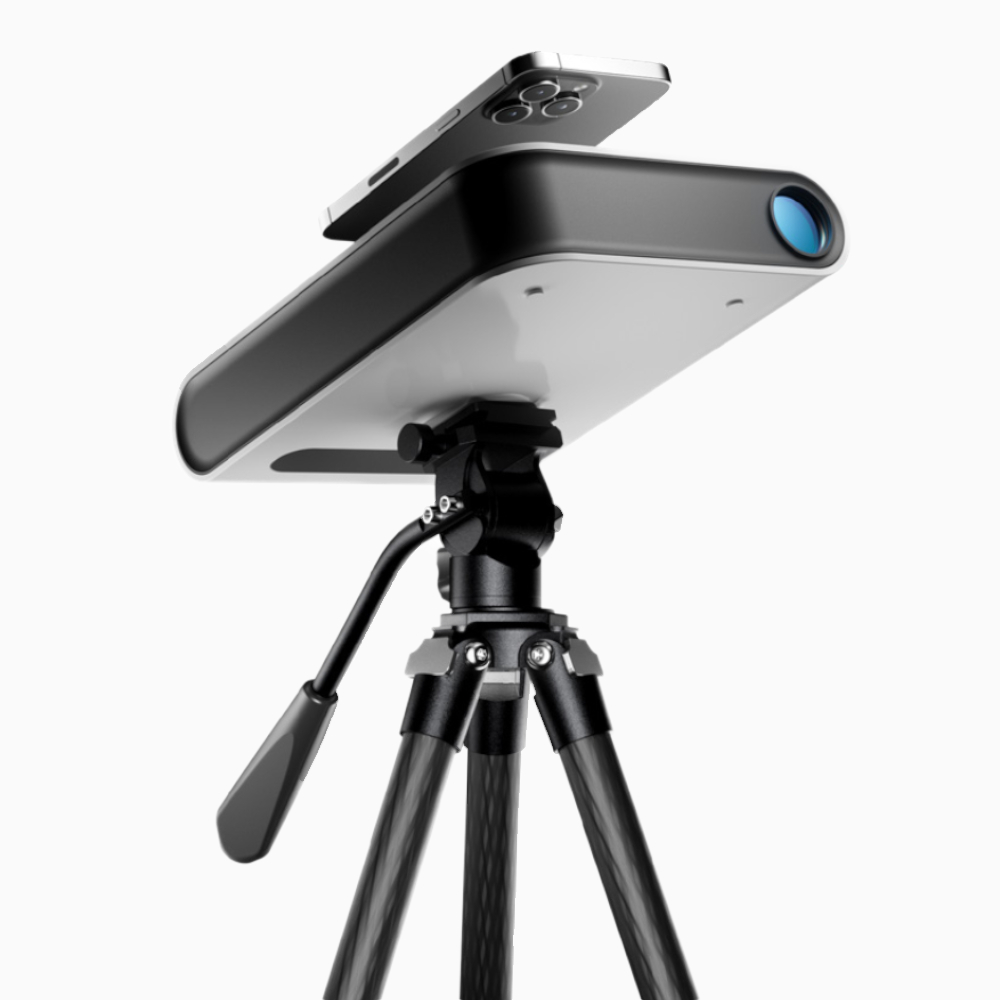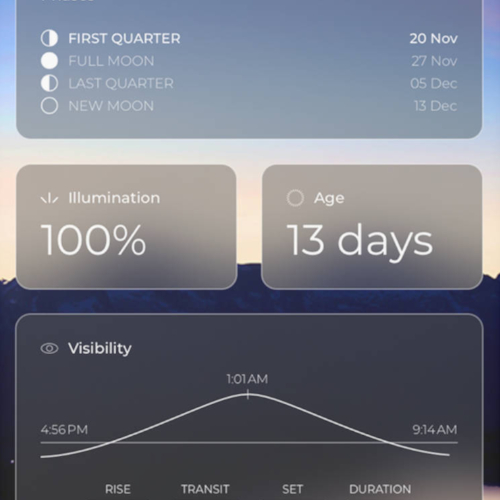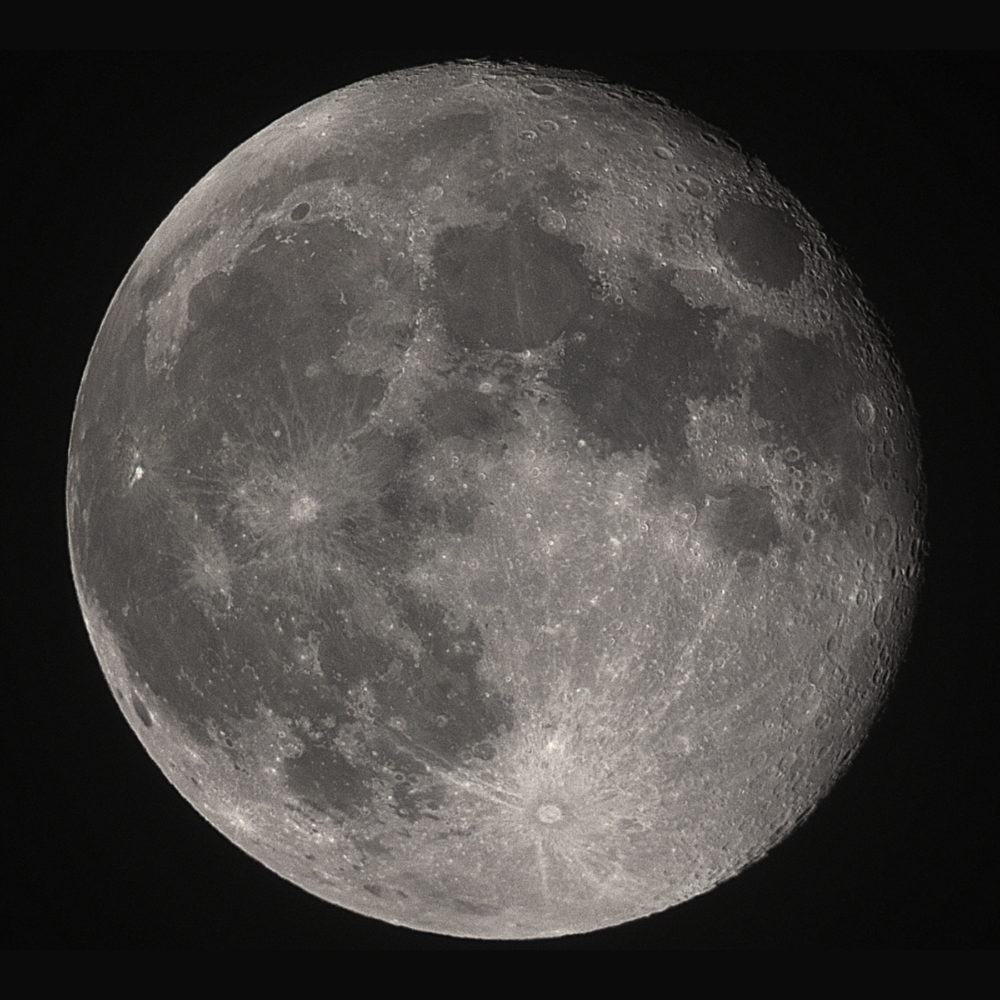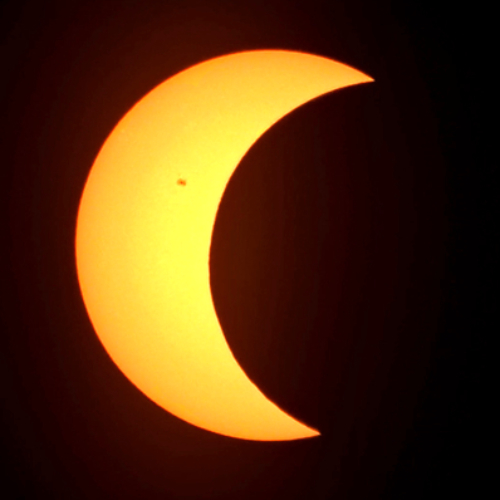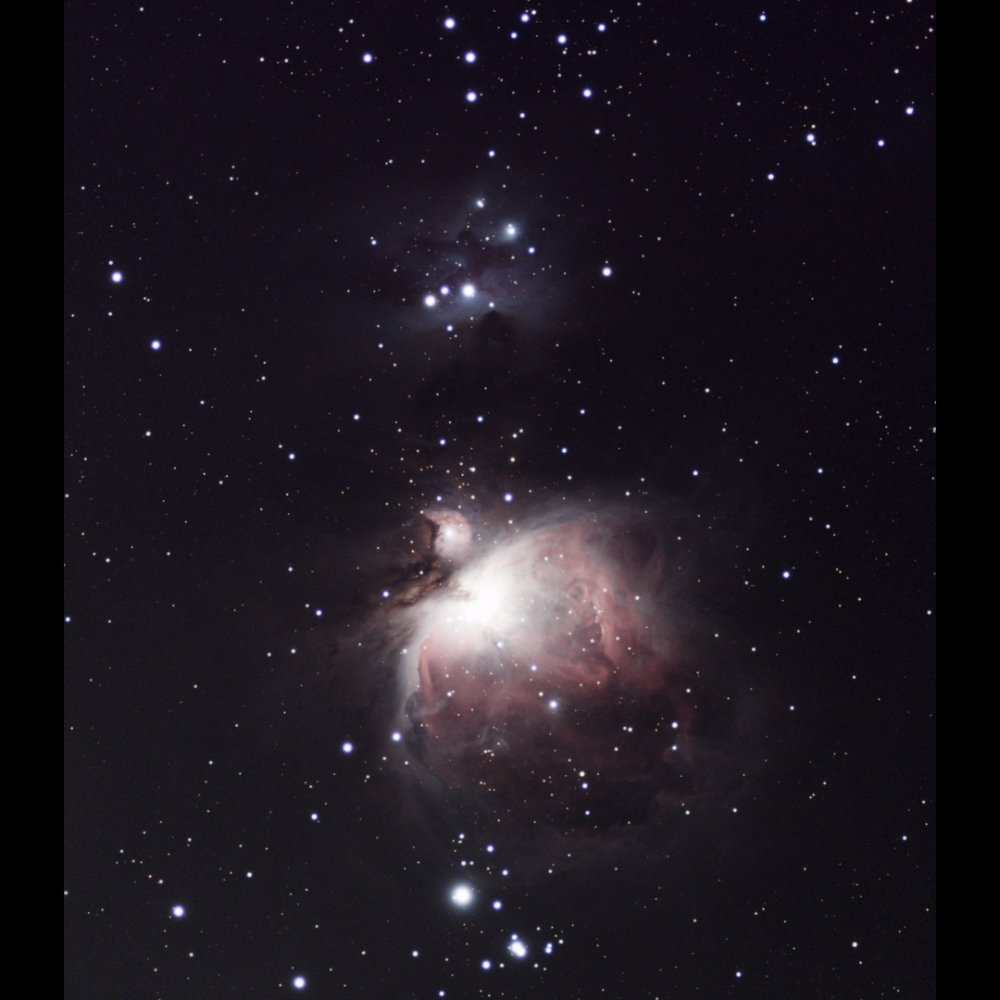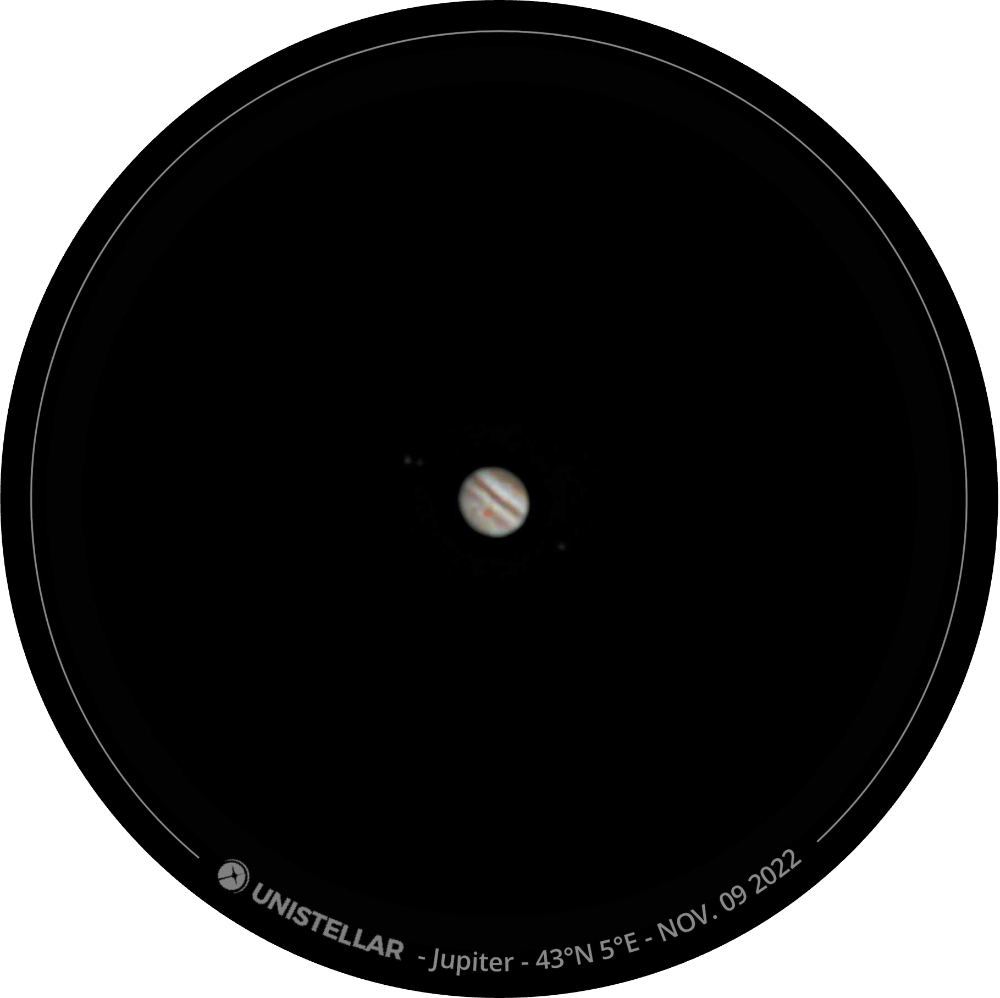Altitude-Azimuth Mount
Commonly referred to as Alt-Az mounts, this type of mount rotates in
two perpendicular axes: left/right and up/down. The altitude axis
alters the elevation angle while the azimuth axis alters the compass
bearing angle. The two of these combined allow for a pointing to any
location in the sky. As opposed to equatorial mounts, these Alt-Az
mounts don't require alignment with the celestial pole, making it easy
for beginners to utilize.
Astrophotography
This refers to photography of astronomical bodies and phenomena.
Astrophotography is not new, for example the popular T threading still
used today harkens from Tamron's T-mount developed for their 35 mm
cameras - however it has seen a notable increase in popularity with
improvements in cameras, mounts, filters, and software making
astrophotography much more accessible. This is not limited to
celestial bodies such as nebulae, planets, or galaxies either, as
solar imaging is now more within the reach of the average consumer
than ever before.
Auto-Focus
Automatic focusing utilizes software to shift the focus of a telescope
in and out to determine the precise focal point of the optics. It does
this by reading the star size at each focus point, creating a graph of
this data, then finds the minimum star size; bringing the optics into
sharp focus.
Autonomous Field Detection
Available with the smart telescope models by UniStellar, this setting
allows for a fully automated alignment procedure in minutes. It works
by comparing what the integrated camera sees in its field of view with
its internal map of the coordinates of tens of millions of stars. This
process helps the eVscope 2, eVscope eQuinox 2, Odyssey, and Odyssey
Pro determine exactly where it is orientated, providing precise Go-To
capabilities as well as tracking accuracy.
Bahtinov Mask
A Bahtinov mask is a tool that aids the user in finding optimal focus
and was created by Russian astrophotographer Pavel Bahtinov in 2005.
This type of focusing aid creates 3 diffraction spikes over a bright
star within the field of view. While adjusting the focus knob, the
point in which the three lines intersect perfectly over the star
result in perfect focus. This tool is widely used by
astrophotographers worldwide and creates an effortless focusing
routine.
Bluetooth
Bluetooth devices contain certain hardware that allows transmission of
data via an antenna. The discoverable device sends out signals that
are then detected by the receiving device, and their connection allows
a transfer of information. This association between devices is called
a piconet, where short radio waves are communicated back and forth.
Calibration Frame
Calibration frames are types of images that are applied to light
frames to remove unwanted artifacts caused by a number of different
factors. Dark frames are images taken at the same temperature as the
light frames, and are necessary to remove hot pixels or other fixed
noise for a cleaner image. Bias frames are similar in this aspect,
though their purpose is to reduce the sensor's readout noise seen
within the light frames. Another type of calibration frame are flat
frames, which remove dust motes or unwanted gradients for a uniform,
even field.
Citizen Science
This type of science utilizes data taken from the general public to
aid in research conducted by professional scientists. UniStellar
offers the option for citizen space science to those with the eVscope
2, eVscope eQuinox 2, Odyssey, or Odyssey Pro by supplying user
captured images to professional astronomers at the SETI Institute.
With numerous citizen science programs from planetary defense,
exoplanets, comets, asteroids, and cosmic cataclysms, UniStellar
allows anyone to become an amateur scientist themself.
CovalENS
CovalENS is an observing mode developed by Vaonis featured on their
Vespera II and Vespera Pro which offers a wider field of view through
panoramic imaging. This type of observation mode allows larger
celestial objects to be captured, such as vast nebulous clouds, large
galaxies, or small asterisms. After selecting the field of view within
the Singularity app by Vaonis, Vespera will then capture various
images and "stitch" them together to create a completed mosaic.
Deep Dark Technology
Designed by UniStellar, this technology greatly enhances the contrast
seen within the images captured through the eVscope 2, eVscope eQuinox
2, Odyssey, or Odyssey Pro. It works by utilizing algorithms to
discern the light coming from celestial objects from surrounding light
pollution. The light pollution is then removed, enhancing clarity on
the target captured. This allows amateur astronomers to enjoy the
night sky even from light polluted urban areas.
Enhanced Vision Technology
Enhanced Vision Technology, from UniStellar, periodically improves the
view of the celestial object by taking short exposures and stacking
these images. By adding frames together, the signal of the target
within the image is greatly enhanced and a reduction in noise is
apparent. This live accumulation of light results in higher quality
images that reveal more detail and color than that seen in a single
frame or a standard eyepiece. The longer the smart telescope stays
imaging the target, the better the image becomes.
Exposure Time
Exposure time is the amount of time the camera sensor is allowed to
collect light. In general, the longer the exposure time, the more
light collected, and the brighter the image will become. This should
be selected with caution though, as an exposure time that's too long
can oversaturate the pixels and blow out the image, resulting in a
loss of signal. Determining the correct exposure time is highly
dependent on the aperture of the optics as well as the gain settings
used. A larger aperture will produce a brighter image than that of a
smaller aperture with the same exposure time. In a similar fashion, an
image with a higher gain setting will be brighter than a lower gain
setting image with equal exposure time. Finding the perfect balance
between the aperture, gain, and exposure time will maximize image
quality.
Go-To Technology
In simple terms, Go-To technology is a telescope mount's ability to
slew to an object in space. This process requires alignment with the
night sky, and is achieved through correlation with the optics of the
telescope and software. Alignment can be achieved a number of ways and
is necessary in order to determine the pointing position of the
telescope. The user can either calibrate their telescope with 1-3
well-known bright stars or planets, or can utilize plate solving if
their software offers it. In plate solving, the field of view is
compared to a database, and the software can then determine the exact
positioning of the telescope. Plate solving is considered more
accurate than star alignment, and is widely featured within the smart
telescopes on the market today for accurate Go-To functionality.
GPS
Originally invented by the U.S. Department of Defense, this technology
became fully functional in the United States in 1995. This radio
navigation system utilizes satellites to provide the precise global
position of GPS enabled devices. Out of the 31 GPS satellites orbiting
Earth today, GPS receivers only need information from 4 GPS satellites
to determine accurate location. Cell phones, computers, and endless
other devices act as GPS receivers. GPS is helpful in astronomy and
astrophotography by providing the imaging software with the correct
time, date, and location, helping create a detailed image of what the
sky should look like based on this information.
Light Pollution
Light pollution is the brightening of the atmosphere due to lights
from streetlamps, other forms of artificial light, and even the Moon.
As light enters the atmosphere, it washes out the night sky, making it
very difficult to observe the stars, nebulae, and planets. In order to
combat light pollution in astrophotography, special filters have been
developed to cut through excess light and enhance images. These
filters are known as City Light Suppression filters, commonly referred
to as CLS filters.
Megapixels
A megapixel is one million pixels, and refers to the number of pixels
a sensor contains. For example, if a sensor has 2,000,000 pixels, then
this would be a 2-megapixel (2MP) sensor. These pixels capture light
and color from the subject, and when combined, the signal collected
results in an image. This measurement of the pixels available
determines the resolution of a sensor and overall quality of the image
produced. In general, the more pixels a sensor has, the higher
resolution images that sensor will yield.
Nebula
A nebula is a type of celestial body that is made up of gas and/or
dust. There are 3 different types of nebulae within space. Emission
nebulae have a "glowing" effect, where they absorb and emit light from
surrounding stars. The colors emitted are entirely dependent on the
gasses present within the nebulae itself. This type of nebula also
includes planetary nebula and supernova remnants, produced by stars
themselves. As opposed to emitting light itself, reflection nebulae
reflect starlight from neighboring stars. Reflection nebulae are
typically blue in color, such as the Pleiades or the Running Man
Nebula. The last type of nebulae is dark nebulae, which blocks stars
and other objects from our view, creating a dark silhouette.
Neutral Density filter
A neutral density filter, commonly shortened to ND filter, is a filter
most common in the world of traditional photography though some smart
telescopes do have ND options available. These filters cut the amount
of light that reaches the imaging sensor, which for smart telescopes
can be helpful in daytime scenarios where over-exposure can't be tamed
with gain and exposure time alone. It's important to note that these
filters do not block enough light to image the Sun,
for which a dedicated solar filter is needed. The exception to this is
the ND filters from DwarfLab for the DWARF II telescope, in which both
included ND filters must be equipped to avoid damage to the device.
Optics
In basic terms, this refers to the system that "collects" and focuses
incoming light down to a smaller, brighter, magnified image that is
then viewed through an eyepiece or captured by a camera. There are
different ways to accomplish this, most commonly with glass elements
(refractor) or with systems of mirrors (reflector). Each approach
comes with its own set of tradeoffs, whether that be chromatic
aberration, coma, etc. which can sometimes be mitigated with upgraded
optical components (ED glass) or additional corrective components
(like coma correctors). Numbers of standard optical designs have
emerged as well, such as doublets, triplets, Petvals, Newtonians,
SCTs, RCs, and more.
PerseverENS
PerseverENS is a technology has brought to their Vespera and Stellina
telescopes which allows these models to automatically stitch together
multiple nights of data from a target (previously only possible
through manual post-processing methods). This increases the
signal-to-noise ratio of the final image, resulting in better noise
reduction and rendering of faint details
Reflector
A reflector is a telescope design that uses specially shaped mirrors
to focus incoming light. Reflectors generally have a large mirror that
collects light, known as the primary, which they then direct to a
smaller secondary mirror to be further reflected to the eyepiece or
camera; though specialized designs with differing numbers of
components exist. Even with this simple arrangement, there are a wide
variety of shapes these mirrors can take to change how the light is
focused resulting in many popular designs. These include the
Newtonian, SCT, RC, and Muskatov-Cassegrain. Reflectors excel in being
more affordable for larger aperture sizes, providing images free of
chromatic aberration, and being lighter-weight when compared to a
refractor. However they do require collimation from the user and
introduce coma that requires correction.
Refractor
A refractor is a telescope design that uses glass lenses to gather and
focus light. This can be done as simply as with two lenses in a design
known as a doublet or in increasingly complex arrangements of glass
elements, with five element telescopes now becoming more and more
available. Refractors are typically more compact than reflectors, and
do not require frequent collimation like telescopes of that design.
Unlike reflectors though, the glass elements in a refractor can
introduce chromatic aberration, and this is where more complex designs
and specialized glass come into play. Refractors also commonly need
corrective elements called field flatteners to provide an even image
for camera sensors, though some newer designs integrate this
correction into the telescope itself.
Resolution
In terms of camera sensors, the resolution is the number of pixels
each image contains. It will typically be listed either in a
width-by-height format, such as 1920x1080, or as the total number of
pixels (given in megapixels). More resolution is generally better as
it provides more detail, the ability to zoom in or crop an image more
before pixelation becomes visible, or the ability to present or print
the picture larger. As a frame of reference, a typical Full HD TV or
monitor is 1920x1080 (2.1 MP) with 4K screens coming in at 3840x2160
(8.3 MP).
Sensor
A camera sensor is the main component of a DSLR, deep sky camera, or
smart telescope that turns incoming light into data that can then be
displayed on digital devices like mobile phones or computers.
Accordingly, these are just as important as the optics of a system for
a quality image. There are a wide variety of specifications that are
important for a sensor - physical size, pixel size, resolution,
dynamic range, amounts of image "noise", and other technologies such
as back-side illumination. As a result there is also a wide variety of
sensors available that attempt to balance these in differing ways for
different applications and price points.
Sky Atlas
Sky Atlas is a digital planetarium created by ZWO for their ASIAIR and
Seestar platforms. Digital planetariums are representations of the
night sky as it appears at a certain time and location, generally
synchronized to those of the user. This allows users to look for
objects to observe/ image, usually showing a visual representation and
technical information about the targets. In more advanced planetariums
like the Sky Atlas and those included in most other smart telescope
apps, GoTo functionality will be included to slew the user's telescope
to whichever section of the sky they desire.
Smartphone-Dedicated
A smartphone-dedicated smart telescope is one that offloads some of
the functionality to a smartphone, such as the imaging capabilities
and processing. This allows these units to come in a more accessible
price point by utilizing technology the user may already have, at the
cost of a bit of ease of use and compatibility (as these generally
don't support every model of smartphone or any model of tablet).
Smart Telescope
Smart telescopes are an all-in-one astronomy device that has built-in
lenses or mirrors that work in conjunction with an integrated camera
sensor to take photos of celestial objects. These telescopes have
tracking capabilities for steady images and are controlled by the user
through smart devices such as smartphones or tablets. They generate
their own Wi-Fi signal allowing for use anywhere in the world.
Solar Eclipse
A phenomena that occurs when the Moon passes in front of the Sun,
blocking some or most of its light. These events happen every year at
one point or another around the globe, and last from a matter of
seconds to a few minutes. While the Moon does block a large amount of
the Sun's light, it is still not safe to view or image an eclipse
directly without special equipment such as solar eclipse glasses or a
solar filter.
Solar Filter
A filter that blocks the majority of incoming light from the Sun, only
allowing a small amount through. These block much more light than
sunglasses, tinted glass, or neutral density filters. The superior
light blocking ability of solar filters allow for direct viewing or
imaging of the Sun and solar eclipses through magnified optics.
Without these filters it is not safe for people or camera sensors to
directly observe the Sun.
Stacking
A method used to bring out what would otherwise be faint or invisible
detail and contrast in an astrophotography image. When imaging a
target, the longer an exposure is, generally the more faint detail
will become visible. However as exposure time becomes longer several
complications emerge - motion blur due to compounding small deviations
or errors in tracking, increased sensor noise and glow, and
overexposure of the bright areas of an image. Stacking mitigates these
issues by combining a number of shorter exposure images, commonly
called sub exposures, sub frames, or simply "subs", into one image
that effectively has a longer exposure time. The stacking process can
further improve the resulting image with the use of calibration frames
that help identify and compensate for visual artifacts introduced by
the optics or sensor itself.
Tracking
As the Earth is continuously spinning and in motion, the location of a
celestial object in the sky moves over the course of a night. This
becomes apparent during observation as a target moves out of view, and
particularly observable in images as stars and objects quickly become
a blur as exposure time and focal length increases. To compensate for
this, computerized mounts and smart telescopes employ tracking
techniques to keep the target centered in the optics. Depending on the
motion style of the mount, the resulting image can vary. Alt-Az
motion, popular in smart telescopes, keeps the object centered but can
not compensate for its "spin" without what is known as a wedge.
Accordingly these images lose information on the edges of the frame as
they rotate out of view, leading to ever smaller, circular, images as
time spent imaging increases.
Wi-Fi
Wi-Fi, sometimes shortened to just WiFi or wifi, is a protocol for
wireless communication. Primarily it is used to transmit and receive
data between a device (such as a smartphone, computer, smart TV, and
an ever increasing number of other household devices) and a router or
wireless access point that is connected to the internet. Communication
with the internet is not the only function the Wi-Fi protocol is
useful for, and indeed many of the aforementioned devices can
communicate with each other locally using this protocol and the router
as an intermediary. Increasingly this protocol has been used for more
direct communication between two devices (like a smartphone and a
smart telescope), with one creating its own access point or broadcast
that both devices then send and receive data on. While this does have
the disadvantage of disconnecting a device's connection to the
internet, it has become necessary to transfer large amounts of data
quickly that otherwise exceed what Bluetooth can accommodate.
